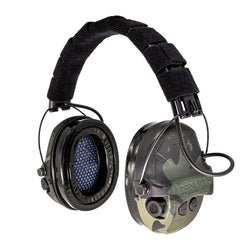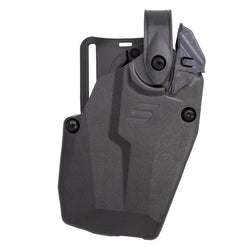DC v. Heller (2008) is arguably the most historic, and significant, Second Amendment case ever decided by the United States Supreme Court. I don’t make that statement lightly. Some might argue that New York State Rifle and Pistol Association v. Bruen (2022) holds that distinction. They could very well be correct. Only time can give us the perspective to properly judge Bruen. It simply hasn’t been around long enough to evaluate its influence.
But, for now, I give Heller the nod because we’ve had fifteen years in which to assess its place in Second Amendment case law. Heller served as Bruen’s foundation. Simply put, if there’s no Heller, there’s likely no Bruen, at least not in its current form, and almost certainly not as strong. Honestly, I view Bruen, in many ways, as clarifying, solidifying, and expanding Heller.
What Does DC v. Heller Say?
Basically, Heller affirmed that the Second Amendment protects Americans’ right to own and possess firearms in their homes for lawful self-defense. The case began when DC Special Police Officer Dick Heller realized the absurdity of Washington, DC’s handgun ban. The law also required that otherwise legal long guns must be kept disassembled or equipped with trigger locks, thus severely impairing their usefulness in an emergency.
Heller’s realization came about by recognizing that he carried a sidearm on duty, in government buildings, but could not possess a handgun in his home. Heller also knew of a case involving a neighbor who had shot an intruder with a handgun but was criminally charged for violating DC’s handgun ban.
Heller filed suit and eventually won when the Supreme Court declared DC’s handgun ban and storage requirements unconstitutional. The decision said that the government cannot ban weapons that are “in common use,” which handguns clearly are.
The Second Amendment Means What It Says
The majority opinion, written by Justice Antonin Scalia, also found that the Second Amendment’s prefatory clause (“A well regulated Militia, being necessary to the security of a free State”) “does not limit…the scope of the operative clause.” The operative clause is the part that says, “the right of the people to keep and bear Arms shall not be infringed.”
Scalia explained that the phrase “to keep arms,” as understood during the founding era, was a “common way of referring to possessing arms, for militiamen and everyone else.” He then wrote that “bearing arms,” during the same period and currently, means to carry weapons for the purpose of confrontation, or self-defense as we term it today. Scalia noted that the phrasing does not “connote participation in a structured military organization.” In other words, the Second Amendment does not limit the owning and bearing of arms to individuals enrolled in the militia, as many gun control advocates claim.
A Pre-Existing Right
Finally, the Second Amendment’s historical background supports the decision’s textual analysis because the Amendment was “widely understood” to have codified a pre-existing individual right to keep and bear arms. That’s why the operative clause says that “the right of the people to keep and bear Arms shall not be infringed,” instead of something like “the people shall have the right to keep and bear arms.” The first clearly protects an already existing right, while the second just as clearly grants that right. There is a definite distinction between the two since a government deeming to grant rights implies its own ability to also retract those rights. But a government charged with protecting a right cannot, by definition, take that right away.
Those findings were victories in themselves. But the decision’s procedural findings carried equal, or possibly greater, weight, setting the stage for numerous subsequent Second Amendment lawsuits, including what became the Bruen Decision.
The Heller Methodology
The Heller methodology, or Heller test, provides parameters for judging gun control laws. The Court held that the Second and Fourteenth Amendments protect an individual right to keep and bear arms for self-defense. Evaluating a gun control law, wrote Scalia, requires a simple test under the Constitution. “When the Second Amendment’s plain text covers an individual’s conduct, the Constitution presumptively protects that conduct, and to justify a firearm regulation the government must demonstrate that the regulation is consistent with the Nation’s historical tradition of firearms regulation.”
Dissenting Justice Stephen Breyer wrote that state governments (including Washington, DC in this case) should be able to balance the right to keep and bear arms with their goal of protecting public safety. Interestingly, this seems to be the point that many lawmakers and certain lower courts took from Heller, along with Scalia’s declaration that no right, including the Second Amendment, is limitless. This approach is also the impetus behind classifying AR-15s and similar firearms as “weapons of war,” thereby implying that they are not “in common use” and protected by the Second Amendment. The dissent, in this case, seems to have carried almost as much weight, in practice, as the majority opinion. But the majority opinion eventually rules the day, and the refusal to abide by Heller’s directives led to the 2022 Bruen case.
From Heller to Bruen
The Bruen Decision affirmed Heller, with Justice Clarence Thomas writing the majority opinion. Thomas repeated the Heller methodology regarding the Second Amendment’s “plain text.” He then noted that Heller, as well as the subsequent McDonald Decision, affirm that “individual self-defense is the ‘central component’ of the Second Amendment right.” Thomas then addressed the interest-balancing tendency of lower courts championed by Breyer’s Heller dissent (and his later Bruen dissent). The two-step balancing process, Thomas declared, is “one step too many.” He wrote, regarding that balancing process, that lower courts have held that legislators have the right to determine restrictions based on circumstances such as concern for public safety.
The problem is that the second balancing step is subjective based on judges’ personal opinions and legislative priorities instead of the peoples’ Constitutional rights. That second step is therefore unconstitutional and will no longer be applied in such cases. This finding in Bruen would have been impossible had Heller not paved the way. At best, Bruen might have established the findings of Heller, only fifteen years later.
A Country Without Heller
Second Amendment victories have piled up since 2008. The individual right to keep and bear arms for lawful self-defense is the law of the land, causing gun control states like Illinois and New York to overreach on their infringements. That overreach has opened them up to serious and successful challenges like the landmark McDonald and Bruen Decisions. Those challenges are ongoing. Suits in California, Illinois, Maryland, and others are likely heading to the Supreme Court, where they will be evaluated using the Heller methodology, which an irksome number of lower courts continue to flout, despite Bruen.
That individual right might not be codified, were it not for Heller. Anti-gun states and cities would do as they please, with little recourse by their citizens. We would have far shakier ground on which to challenge handgun bans, so-called “assault weapon” bans, magazine restrictions, and mandatory storage laws. Judges like Roger T. Benitez (peace be upon him) would have no legal precedent by which to strike down those onerous laws. Not even the Second Amendment since its meaning would not be formally codified. In other words, the current gun rights Renaissance probably wouldn’t be happening.
So, celebrate the wins that Bruen is giving us right now. But keep in mind that, were it not for Dick Anthony Heller’s tenacity in the face of government injustice, they wouldn’t be happening. Mr. Heller is a true Second Amendment champion. We owe him a debt of gratitude.









